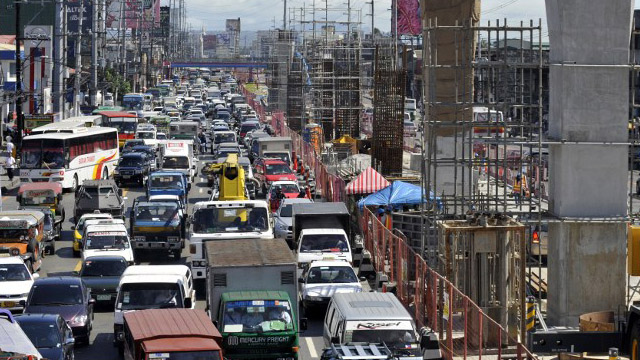SUMMARY
This is AI generated summarization, which may have errors. For context, always refer to the full article.

MANILA, Philippines – The plan to disallow provincial buses and Asian Utility Vehicles (AUV) from plying the congested roads of Metro Manila, including main thoroughfare Edsa, is a step closer to implementation.
On Thursday, July 18, President Benigno Aquino signed Administrative Order No. 40 establishing transport terminals north and south of Metro Manila. These facilities will be temporary until the planned integrated transport systems (ITS) project is fully operational by 2016. The previous target was 2015.
The order covers the “loading and unloading of passengers by buses and AUVs plying provincial routes entering Metro Manila,” as well as “their efficient transfer to city buses and AUVs operating within Metro Manila.”
Once implemented, the franchises and routes of public utility buses will be revised, particularly their end points. Provincial buses will only be allowed to go as far as their designated terminals when entering Metro Manila.
These upcoming terminals are meant to dramatically improve traffic in Metro Manila, especially in Edsa, where most provincial buses have their current terminals.
The plan
A priority project of the Aquino government, the ITS provides for the following facilities:
1. North terminal
This is a facility that will have access to the North Luzon Expressway (NLEx) for provincial buses and AUVs with Northern Luzon routes.
These are the buses and AUVs originating from NLEx, MacArthur Highway, Mindanao Avenue, Quirino Avenue or Commonwealth Avenue that will have to operate at this terminal instead of their current facilities within the capital proper.
The Department of Transportation and Communication (DOTC) is responsible for developing this terminal.
2. South terminal
This will be where buses and AUVs from provinces south of Metro Manila that enter the capital via South Luzon Expressway (SLEx) will stop or depart from.
A potential site for this is the 103-hectare Food Terminal Inc. complex in Taguig City. Ayala Land won the government auction for the complex’s 74-hectares, while the Department of Public Works and Highways (DPWH) has reserved 29 hectares that the agency plans to allocate for other purposes, including a 5-hectare integrated bus terminal.
The DPWH is tasked to develop this terminal facility.
3. Southwest terminal
This terminal will be for those coming from south of Metro Manila entering via Coastal Road or Manila Cavite Expressway (Cavitex).
The Metro Manila Development Authority (MMDA) is in-charge of developing this terminal.
The DOTC is the lead and coordinating agency for the ITS project while the Land Transportation Franchising and Regulatory Board (LTFRB) is tasked to maintain the terminal facilities, providing sanitation, security, repair and other administrative services.
The LTFB is in-charge of adjusting the routes and areas of operation of the affected provincial buses and AUVs, as well as the routes of the city buses, AUVs and jeepneys that will bring and pick-up passengers and goods to and from the terminals.
Priority project
The ITS project has become a priority for the government as traffic continues to grow. Data from the Metropolitan Manila Development Authority (MMDA) shows that of the total 13,067 buses clogging Metro Manila roads each day, 7,368 or 60% are from the provinces.
Of the 85 provincial bus terminals currently in existence, 46, or more line the already busy EDSA.
This ITS project was first publicized in March 2012, when President Aquino signed Executive Order 67, which provides for the establishment of ITS under the public-private partnership (PPP). The DOTC has been scouting for potential sites since April 2012.
Initially, the target was to make sure that the designated terminals will be built not just near the expressways, but will also be accessible to the existing rail systems, including the Metro Rail Transit (MRT), Light Rail Transit (LRT) and Philippine National Railways (PNR).
To help ease traffic congestion within Metro Manila, the DOTC is mulling a Bus-Rapid-Transit (BRT) system while the DPWH is implementing a modified truck ban plan. – Rappler.com
Add a comment
How does this make you feel?
There are no comments yet. Add your comment to start the conversation.